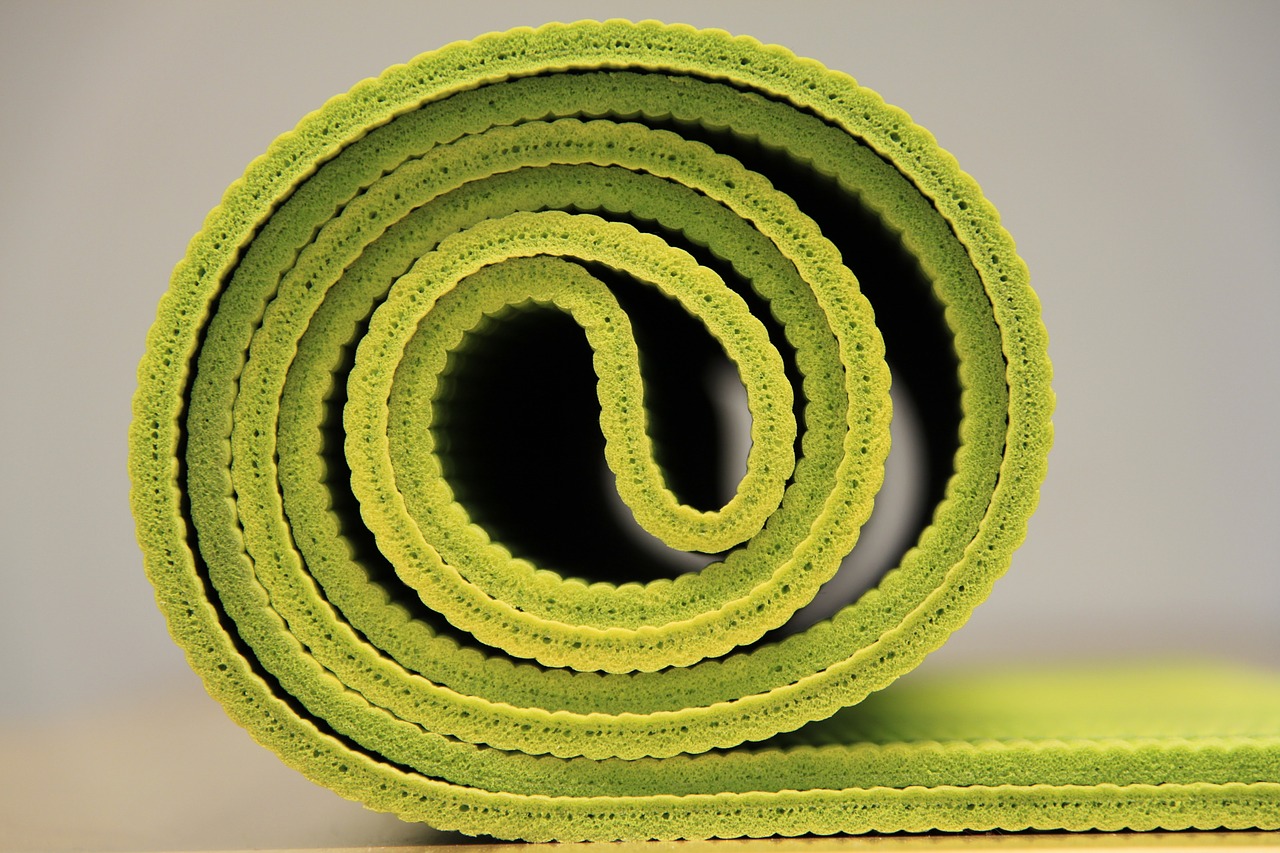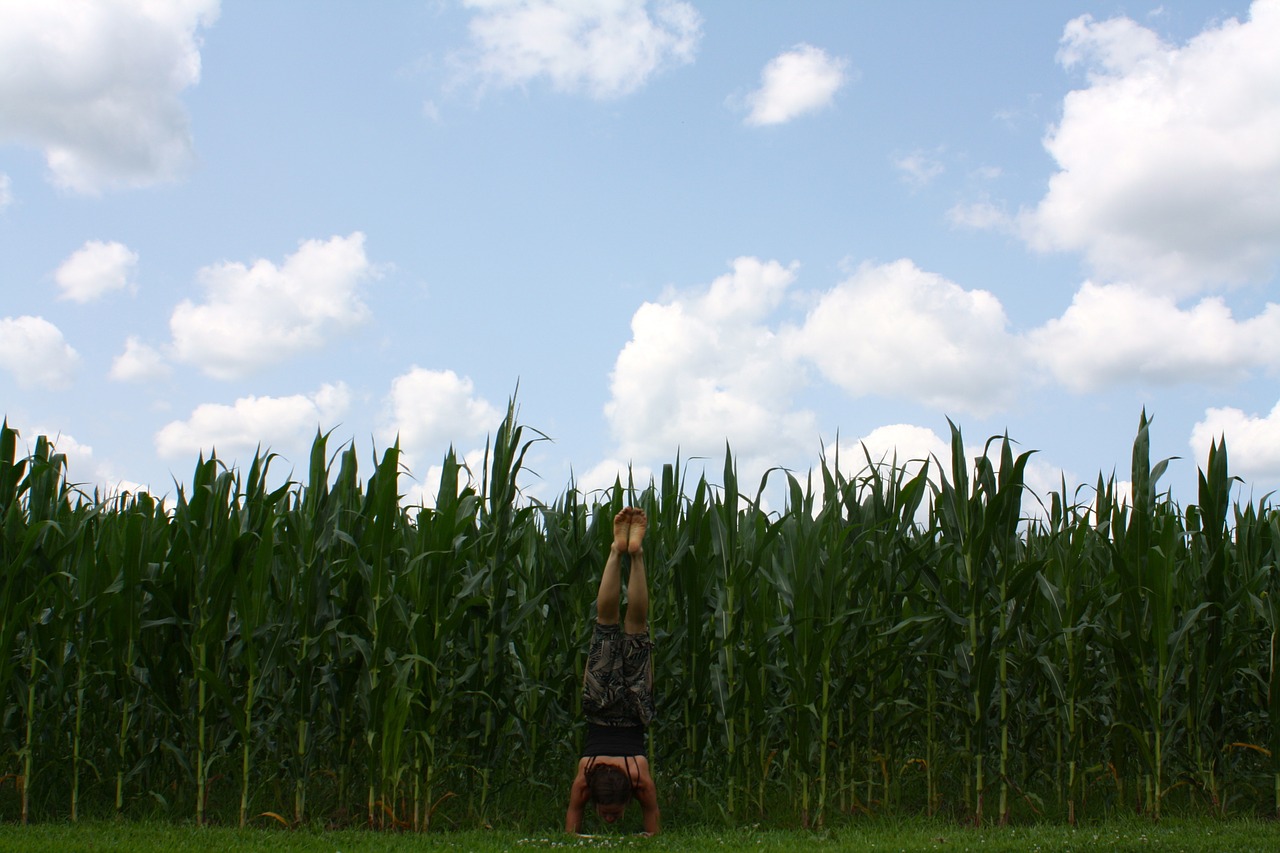
Relieving Stress through Yoga – 9 Useful Tips
For me, setting aside every task and “to-do” I have for the day to take a yoga-break is indispensable. Sometimes, I wonder what is so magical about this activity that makes it the best part of my nerve-racking day. When yoga was developed several thousand years ago, few people had the answer to what makes this exercise so amazing—well, at least not from a scientific perspective. Today, however, we can look into science for the answer.
Science says yoga has the ability to de-stress our nervous system. According to an article in Scientific American, “[s]tress can make symptoms of chronic pain and depression worse. But yoga might be able to help, in part by stimulating the cranial nerve and an important neurotransmitter called GABA (Harmon, 2012).”
To bring your stressful life into balance, it is important to set aside a few minutes and take de-stressing yoga break. Relieving stress through yoga is is possible – even for beginners – when following these 9 simple tips.
Let Go of Yoga Myths
It’s not uncommon to think twice, or even three times, before signing up for a yoga class. The problem therein lies with the myths about yoga: “Yoga is all about being flexible,” “Yoga is a solid exercise,” “Yoga is something you practice in mornings and evenings only.” Not true, not true, and not true again.
First of all, doing yoga is not all about difficult positions (asanas). There is much more to it. Secondly, yoga is not the kind of exercise that will give you six-pack abs in a month. Fitness is only one of the dimensions of yoga, with others including overall physical health, mental health, and even spirituality. Yoga certainly won’t give you abs or make you lose 50 pounds in a short time. For that, you can go to the gym. Lastly, yoga is not restricted to any time or number of practices in a day. You can practice any time you like.

Find the Most Comfortable Spot
The last thing you want to do is practice yoga while you are watching T.V. (unless it’s teaching you yoga) or using a smart phone. By doing this you are missing the point. Find a comfortable spot where there is peace and quiet. It’s better to be close to an empty wall since they come in handy in case you need support. You can also create an atmosphere by lighting candles or an incense stick, but of course, this is not utterly necessary. Invest in a comfortable yoga mat if you don’t already have one. The atmosphere you create is extremely important for aiding comfort-ability and concentration, and thereby reducing stress.
Discover Stress-Relieving Yoga Asasnas
While one asana (or yoga pose) may be good for one thing, another may be better for something else. When it comes to stress-relief, a couple yoga asanas are labeled the “best.” Stress relieving yoga asanas help reduce body tension. The following are top-rated stress relief poses.
Top-Rated Stress Relief Poses:
- Dhanurasana (Bow Pose)
- Balasana (Child pose)
- Matsyasana (Fish Pose)
- Janu Sirsasana (One-Legged Forward Bend)
- Setubandhasana (Bridge Pose)
- Marjariasana (Cat Stretch)
- Paschimottanasana (Seated Forward Bend)
- Hastapadasana (Standing Forward Bend)
- Adho Mukha Shwanasana (Downward Facing Dog)
- Sirshasana (Headstand)
You may try out various poses until you have discovered a favorite routine.
Always Warm Up
You have to introduce your body to the practice before you begin. Let it know what you want from it. To do this, you need to begin with easy warm up exercises which will get the body heated up and the blood running. Warming up with simple poses and slow stretches is a good way start building up.
Don’t stress!
Don’t worry about whether or not you’re doing it right!
While practicing yoga, you need to leave your worries behind. Don’t let the accuracy of your poses and Om’s cloud your concentration. Clearly, by doing so you are only adding to stress, not reducing it. Instead, try to focus on how relaxed you feel each time you do a pose.

Concentrate on Your Breath
Breathing and yoga go hand in hand. Some people resort to breathing techniques only for stress relief. This is also an effective technique, but even more so when combined with yoga exercise. Take deep, shallow breaths and concentrate on how you are inhaling and exhaling. Breathing in or breathing out should be no less than 5 seconds, each.
Listen to Your Body
The best yoga practitioners excuse slight variations to yoga poses because they know that no two yogis will hold a pose in exactly the same way. For this reason. It is important to listen to your body while you are doing yoga. You body may be telling you to stop because you aren’t comfortable. Alternatively, it may be telling you to stay put because it feels perfectly balanced. You don’t always have to follow your teacher, especially if something doesn’t feel good. Listen to your body and gently push it further when it feels comfortable going beyond limits. While doing yoga, your need to let your body be your guide and your “other” self.
Let Go of Competitiveness
In a class where there are 30 or so other yogis/yoginis, everyone could be at different levels depending on their body’s capabilities. However, you can’t possibly compare your body to another because yoga requires extreme devotion and dedication to your body, and yours only! This means that you have to stay focused on your own individual needs rather than the partner next to you who seems to be moving fast. Competing with others will cause unnecessary stress and overexertion of the body, eventually leading you to drop the exercise. Acknowledge the fact that every body’s needs are different and should be treated differently.

Think about Peace and Happiness
To aid the meditative process and help reduce anxiety, think about a past event when you could overcome your difficulties and turned out better than you were before. If it’s too cloudy for you to think about this during your asanas, then try to focus on what makes you happy in your life. This could be something as simple as a trip to a beautiful beach, the wind beating on your face, or the memory of a beautiful garden you once visited. The possibilities of happy and peaceful thoughts are endless.
In the end, just pray, have faith, and stay positive!
REFERENCES
Harmon, Katherine. (2012). How Yoga Might Relieve Stress-Linked Ailments. Scientific American. Retrieved September 14, 2015 from http://www.scientificamerican.com/podcast/episode/how-yoga-might-relieve-stress-linke-12-03-13/
Eilidh Edgar is an academician and an advanced yoga practitioner who helps students order coursework help with reliable service providers. Moreover, she shares yoga tips and practices to help them reduce stress and perform better in their academics.







